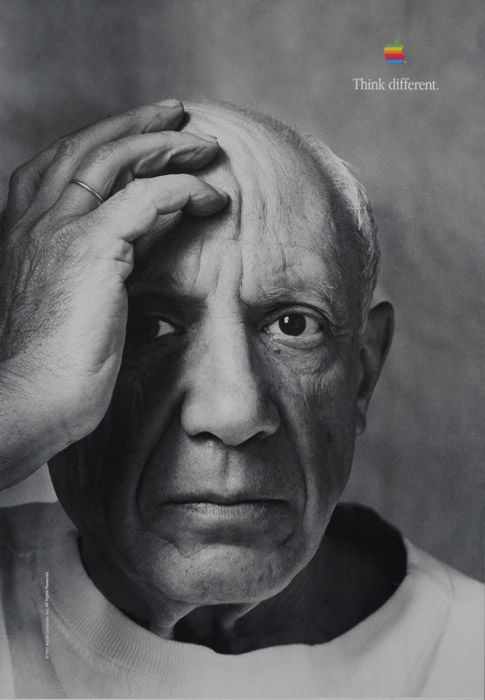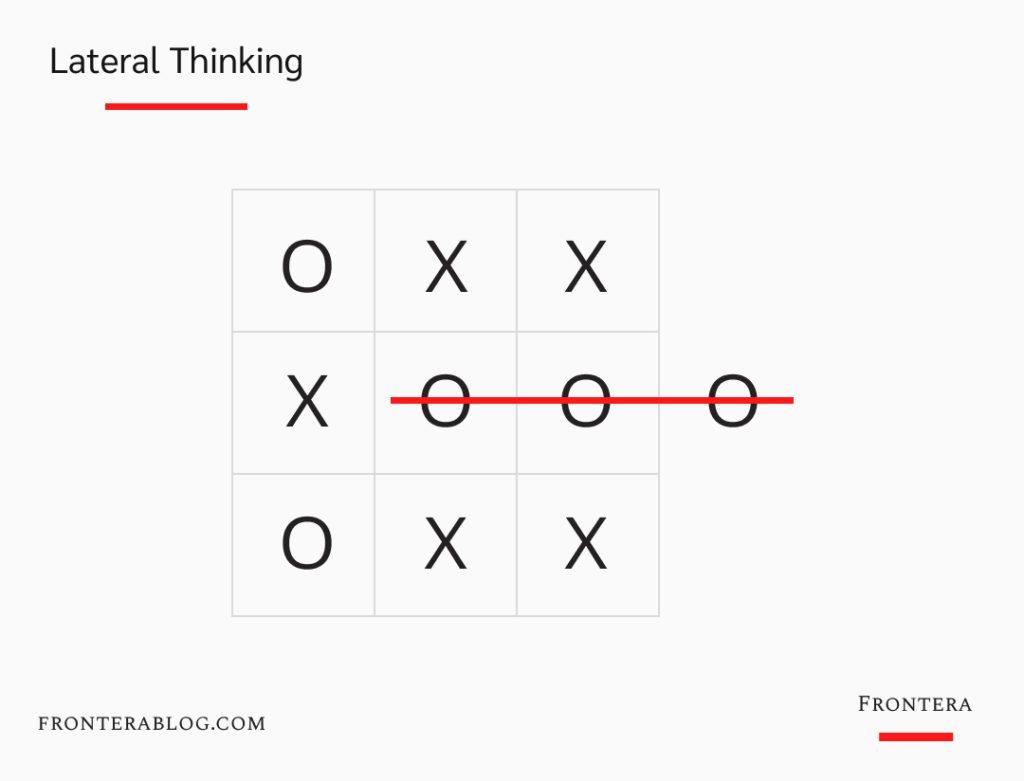Lateral thinking is a mental model to find creative solutions to complex problems.
In 1997, Steve Jobs returned to Apple to revive the company from the ashes.
And they wanted a new campaign to announce Apple was back.
Apple’s competitor IBM’s slogan was “Think.”
So as a response, the ad agency came up with the famous line: “Think different.”
The ads were simple and potent. There were no references to any Apple products.
Only the posters of historical figures like Richard Feynman, Muhammad Ali, and Picasso with the “Think different” slogan.

The campaign became one of the best in advertising history. And Apple has become what it is today.
But a question arises after seeing those beautiful ads: is there a way to deliberately think different?
Think laterally to think different
We face many complex problems in life.
And as we’re rational beings, we think and look for logical solutions. But sometimes, logic becomes a burden to find the right solution.
Because it limits us to logical constraints before we discover all other possibilities.
That’s when lateral thinking comes in to help. It forces you to break the barriers that limit your creativity.
So you can think different to see the solutions nobody else can see.

Two methods to think laterally:
1. Force unusual connections
When trying to solve a business problem, asking “What would Napoleon do?” might sound strange.
But it can give you various ideas:
- He engaged the enemy quickly when he saw an opportunity: Launch the existing product without losing time
- When needed, he skillfully changed his army’s formation during the battle: Pivot to another product
- He cared about logistics and believed that an army marches on its stomach: Solve the employees’ problems first to increase customer satisfaction
You see how unrelated ideas trigger relevant ones.
And of course, you can keep asking to come up with more ideas: What would Donald Trump do, how would Thomas Edison fix this, etc.
You’ll come up with creative ideas that you wouldn’t normally think of.
I use it for writing too.
I take notes of the interesting stories I’ve read or watched.
And while writing about a topic, I look to my story list and try to use one — no matter how unrelated it seems.
Most of my attempts fail.
But when I manage to make a meaningful connection between two unrelated topics; it makes the article much better.
2. Change the perspective
Some years ago, British authorities wanted to improve the London-Paris train journey.
So they asked engineers to come up with a plan.
Engineers proposed a £6 billion solution to change the tracks to cut 40 minutes off a four-hour journey.
While evaluating the proposal, British authorities also asked Rory Sutherland’s (advertising executive) opinion.
He said:
It strikes me as an unimaginative way of improving a train journey merely to make it shorter. What you should do is employ all the world’s top male and female supermodels, pay them to walk the length of the train handing out free champagne for the entire duration of the journey. Now you’ll still have about 3 billion pounds left in change and people will ask for the trains to be slowed down.”
Rory Sutherland
It was a joke, but he made a point.
He showed that by reframing an engineering problem into a psychology problem, it’s possible to get a cheaper and better solution.
In the end, they followed Sutherland’s proposal of adding Wifi to the trains. And it made the journey much better without spending billions.
To the man with only a hammer, every problem looks like a nail.”
Abraham Maslow
So when you feel stuck dealing with a problem, try thinking laterally by reframing it.
A better solution can come from another angle.
Enjoyed this article?
Then you’ll love the How Brands Win Newsletter.
Get the “7 Positioning Sins That Cost B2B Brands Millions” guide when you join. It’s free.
Recommendations & References:
1. The TV version of the Think Different ad (1 min), narrated by Steve Jobs. In the end, he decided to use a version narrated by Richard Dreyfuss as he didn’t want to make the campaign about himself, but about Apple.
2. The train story is from Rory Sutherland’s interview. His book Alchemy: The Dark Art and Curious Science of Creating Magic in Brands, Business, and Life is a great read full of lateral thinking examples.
3. Edward de Bono coined the term and the concept in his book The Use of Lateral Thinking.
